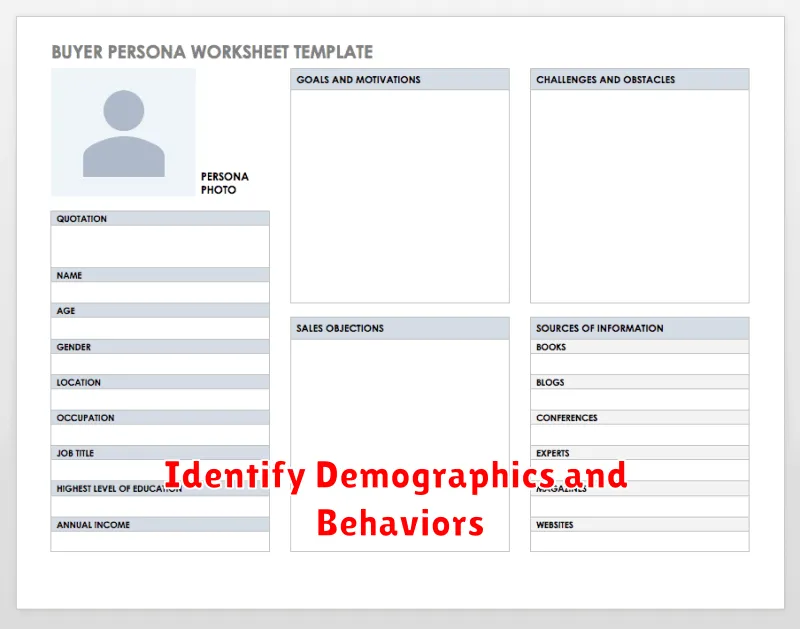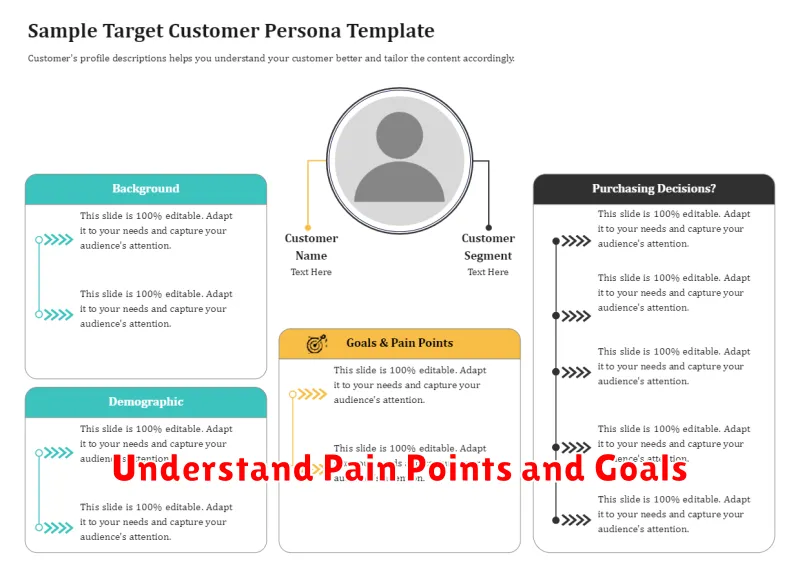Understanding your ideal customer is crucial for effective marketing and business growth. Creating a detailed customer persona allows you to target your efforts, personalize your messaging, and ultimately boost conversions. This guide provides a comprehensive overview of how to create a customer persona for your business, enabling you to tailor your strategies and connect with your target audience on a deeper level. Learn how to identify key demographic and psychographic information to build a customer persona that truly represents your ideal customer. Master the art of customer persona development and unlock the potential for increased engagement and profitability.
Developing a robust customer persona goes beyond simply gathering demographic data. It involves delving into the motivations, pain points, and buying behaviors of your target audience. By understanding the challenges your ideal customer faces, you can position your product or service as the perfect solution. This article will equip you with the tools and techniques necessary to craft a customer persona that serves as a valuable asset for your business, guiding your marketing decisions and enhancing your overall customer experience. From market research to data analysis, discover the essential steps to create a customer persona that accurately reflects your target market and drives business success.
Why Knowing Your Customer Matters
Understanding your customer is the cornerstone of any successful business. Knowing your customer allows you to tailor your products, services, and marketing efforts to meet their specific needs and preferences. This, in turn, leads to increased customer satisfaction, loyalty, and ultimately, profitability.
Without a clear understanding of your target audience, you risk wasting valuable resources on ineffective marketing campaigns and developing products or services that miss the mark. Customer knowledge empowers you to make informed decisions, optimize your business strategies, and stay ahead of the competition.
By knowing your customer, you can:
- Improve product development: Create products and services that truly resonate with your target audience.
- Enhance marketing effectiveness: Craft targeted messages that speak directly to your customer’s needs and pain points.
- Boost customer satisfaction: Provide personalized experiences that foster loyalty and advocacy.
- Increase profitability: Optimize your resources and maximize your return on investment.
Where to Gather Data
Gathering accurate data is crucial for creating a realistic customer persona. There are several avenues you can explore to collect valuable information about your target audience. Existing Data within your company is a great starting point. Analyze your CRM, website analytics, and marketing automation platforms to understand customer behavior and demographics.
Surveys are an effective method for collecting direct feedback from your customers. Keep surveys concise and focused to encourage higher completion rates. Interviews, though more time-consuming, provide rich qualitative data. Speaking directly with customers allows for in-depth understanding of their needs and motivations.
Social Media listening can offer insights into customer conversations and preferences related to your industry and brand. Pay attention to what your target audience is saying and sharing online.
Identify Demographics and Behaviors

After defining your persona’s goals and frustrations, the next crucial step is identifying their demographics and behaviors. This data-driven approach provides a realistic picture of your ideal customer.
Demographics provide the foundational understanding of your persona. Consider factors such as:
- Age
- Gender
- Location
- Education Level
- Occupation
- Income Level
- Family Status
Understanding behaviors offers insights into how your persona interacts with the world and, more specifically, with products or services like yours. Key behavioral aspects include:
- Purchasing Habits
- Tech Savviness
- Preferred Communication Channels
- Brand Loyalty
- Content Consumption Preferences
Gathering this information allows you to create a well-rounded persona that accurately represents your target audience.
Understand Pain Points and Goals

After gathering demographic and psychographic information, the next crucial step is to delve into your potential customers’ pain points and goals. Understanding these aspects is fundamental to creating a truly effective customer persona.
Pain points represent the challenges, frustrations, and problems your target audience faces related to your industry or niche. Identifying these pain points allows you to position your product or service as the solution they’ve been searching for.
Goals, conversely, represent what your target audience hopes to achieve. These could be personal, professional, or financial aspirations. By understanding their goals, you can tailor your messaging and offerings to demonstrate how your business can help them reach these objectives.
Consider using the following questions to help identify pain points and goals:
- What challenges do they face in their daily lives related to your product/service?
- What are their biggest frustrations with existing solutions?
- What are their primary motivations?
- What are their short-term and long-term goals?
Create Multiple Personas for Niches
If your business caters to distinct market segments, creating multiple personas is crucial. Each persona should represent a specific niche and reflect the unique characteristics, needs, and behaviors of that customer group. This targeted approach allows for more effective marketing and product development.
For instance, a software company offering both a basic and a premium version might create separate personas for budget-conscious startups and for established enterprises. The startup persona might prioritize affordability and ease of use, while the enterprise persona might value advanced features and robust security.
By developing distinct personas for each niche, you can tailor your messaging, product features, and customer support to resonate with each specific group, ultimately leading to improved customer satisfaction and business growth.
Apply Personas in Marketing and Sales
Once you’ve developed your customer personas, it’s crucial to apply them effectively across your marketing and sales strategies. Personas provide valuable insights into your target audience’s behaviors, preferences, and motivations, allowing you to tailor your approach for maximum impact.
Marketing Applications
In marketing, personas inform content creation, ensuring it resonates with the intended audience. Knowing your persona’s preferred channels helps focus your marketing efforts where they’ll be most effective. This targeted approach improves engagement and increases ROI.
Sales Applications
Sales teams can leverage personas to personalize interactions and build rapport with potential customers. Understanding a persona’s pain points allows sales representatives to address specific needs and present solutions effectively, ultimately leading to higher conversion rates.

